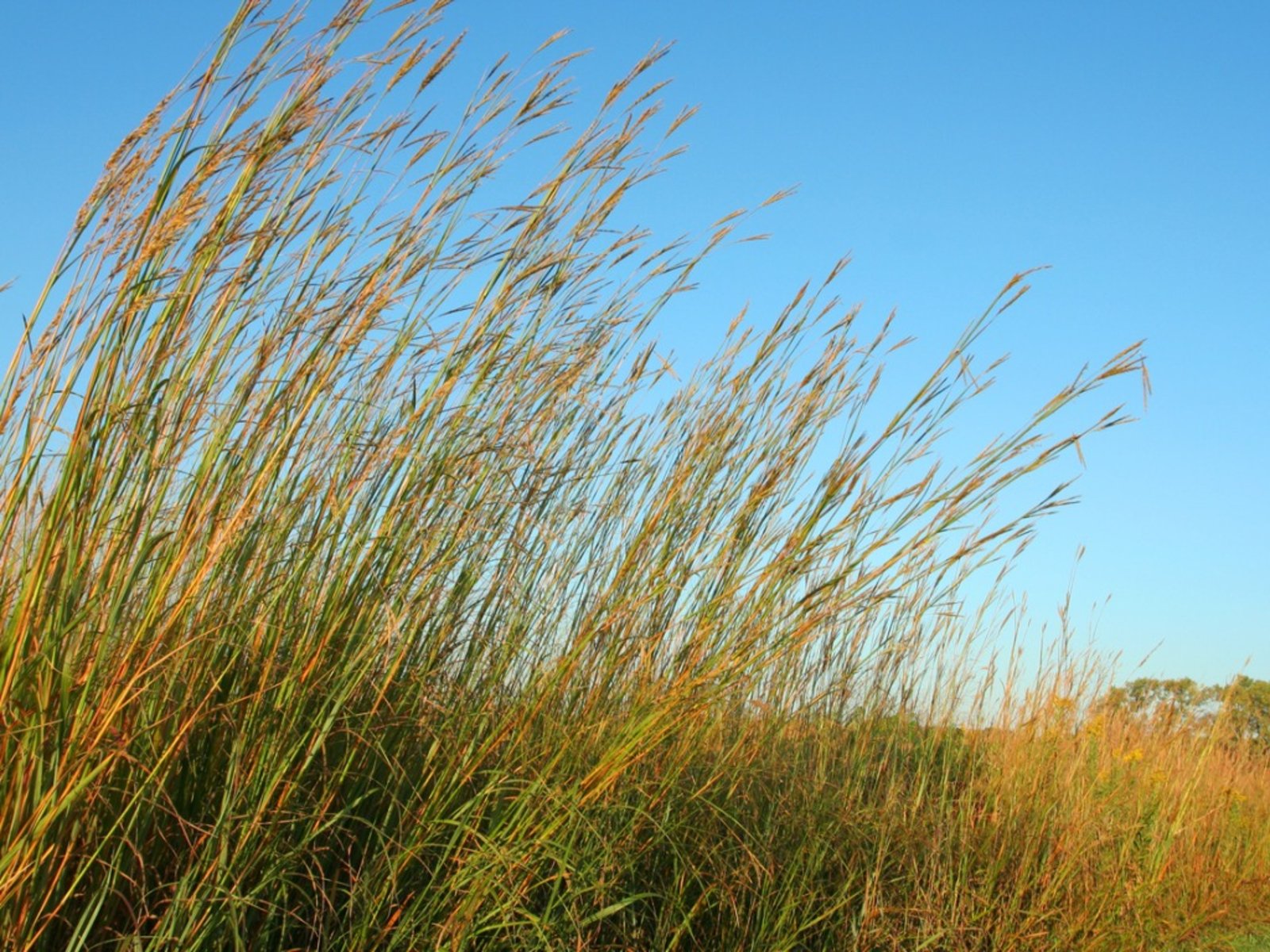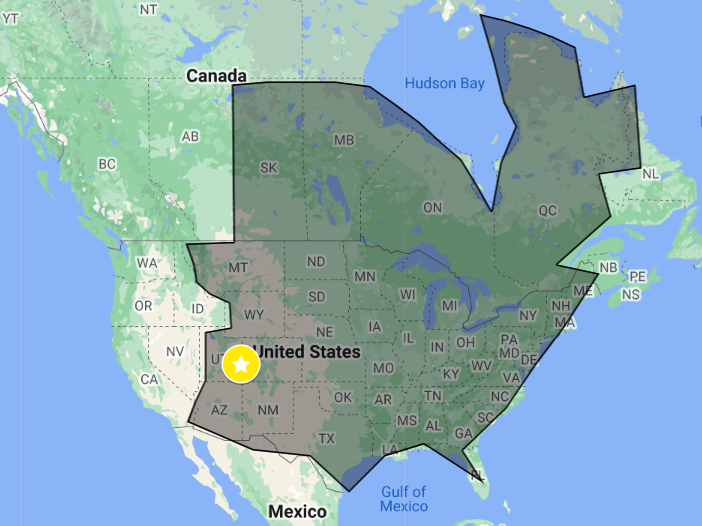Bluestem on 270 Pope Lane
Big Bluestem (Andropogon gerardii)
30 million years before cows ever set hoof on the continent of North America, a family of grasses called Poaceae grabbed hold on the landscape and began to spread rapidly, creating the first grasslands. The method Poaceae uses to convert carbon dioxide (C02) and water into sugars for plant growth was aptly suited to a warm climate with frequent fire. Plants must acquire C02 to photosynthesize but in a hot environment, they risk losing precious water, a deadly tradeoff in arid climate. Poaceae's photosynthetic mechanism produces more energy with less CO2; in short, a game-changer for plant evolution and the success of grasses.
Those millions of years of genetics root firmly into the rusty, loam soil of 270 Pope Lane in the form of an unassuming plant, Big Bluestem - Andropogon gerardii. Several members of Bluestem are scattered about the property, one in view of the house's front door, another nestled between its cousin Side-Oats Grama and a Mormon tea plant, more popping up all around the house. These Bluestems are tall, over 4 feet, and green-blue in stem. They are an integral member of the community which resides on the property. They wave their purple, fine-haired, turkey-foot seedheads in a friendly, welcoming manner as a breeze sweeps across 270 Pope Lane.
Across Big Bluestem's range from Canada to Mexico, it serves as an essential prairie grass. Here in Castle Valley, Utah where 270 Pope is located, Bluestem has a variety of ecosystem interactions, providing forage and cover for a swath of different critters: upland game species, songbirds, and insects. In spring, one might discover newly hatched skipper caterpillars munching on the leaves of Bluestem. While Bluestem uses wind to spread its seeds, not insects or other pollinators, species like skipper butterflies still flit about it, looking for a safe home to lay eggs.
Big Bluestem grows rapidly in just a few months, from mid to late spring before drying out in the hot summer and in the right soil and moisture conditions, can spread far and wide. It is water limited but does well on a variety of soils, growing best on fertile silt and clay loam. In the Castle Valley - Moab area, the soil is a fine gravelly loam and is dry up to 75% of the time. This does not stop Bluestem from thriving. Its competitive dominance is due in part to mycorrhizal interactions within the roots, a symbiotic relationship where the fungi in Bluestem roots intake nutrients, minerals, and water, providing them to the plant, receiving sugars in return. This relationship lets Bluestem grow quicker, spreading over the land, growing deep fibrous roots. Bluestem's root structure proves intensely difficult to remove from the ground; the roots can extend up to depths of 8 feet and greatly resist the efforts of a shovel. The roots weave together in a clumpy tangle, densely packed, occasionally detrimentally so. Big Bluestem exhibits reduced competitiveness and hosts benefit from the mycorrhizae when crowding occurs.
Like many perennial grasses, Big Bluestem evolved with migratory grazers like bison in parts of its range and with other grazers like elk and white-tailed deer. It did not evolve with the influence of cattle, and over-grazing dramatically reduced the range of the species. It was widespread throughout most of the United States and cattle grazing reduced its prevalence to a fraction of what it once was. It is often described as ice cream for cattle and as such pays the price for being so tasty. To the human palate, it certainly does not taste like ice cream but in the opinions of some, it is one of the more delicious grasses to be eaten.
At 270 Pope Lane where it is native, Bluestem was completely gone from the land, replaced by cheatgrass as far as the eye could see until the human inhabitants planted two individuals. These two Bluestems on Pope Lane exhibit different distinct characteristics, evidence of the innate variation within a species. The classic turkey foot seedhead of the Bluestem near the front door is dark and maroon-black in coloration, seeping down into the tiller. The other Bluestems are much lighter in stem and seed, greenish and blue. Big Bluestem spreads quickly when given the chance. It is capable of both sexual and asexual reproduction, but its growth is mostly the result of vegetative regeneration. Above-ground portions grow bigger from surviving root structures ⎯its rhizomes. When untouched by cattle, Big Bluestem grows like wildfire.
At 270, the two reintroduced Bluestems have grown into large wonderous bunchgrasses which produced more and more of themselves in turn, enough to the point where human inhabitants regularly remove some individuals. The Bluestem in Castle Valley are hopeful plants. They show that the species could, under the right care and conditions, without the influence of cattle, return to more of its range. Big Bluestem, the hearty, beautiful grass species, has the capacity and history to thrive in the United States and hopefully will do so again, starting in places like 270 Pope Lane, Castle Valley Utah.
By Rachel Husband



